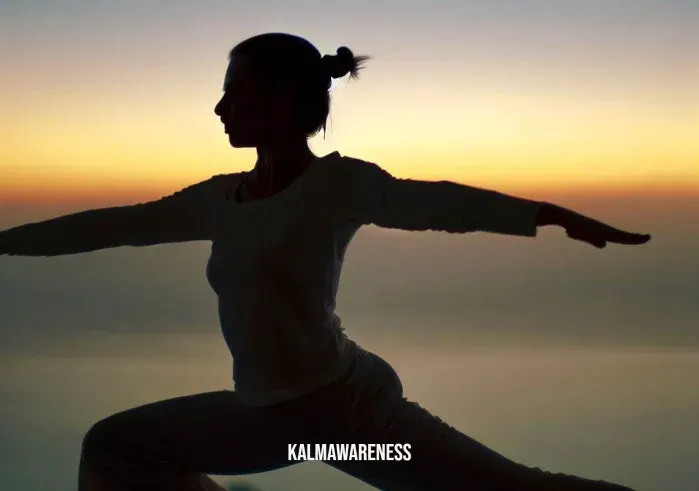Exploring the Flying Dragon
In this article, we will dive into the fascinating world of yoga and explore the captivating Flying Dragon Yoga Pose. Get ready to soar like a dragon, stretch your limits, and find tranquility in this powerful posture.
Yoga has been a source of physical, mental, and spiritual well-being for centuries. It offers a plethora of postures, each designed to target specific areas of the body and mind. Among these is the Flying Dragon Yoga Pose, a dynamic asana that combines strength, flexibility, and balance. As you engage in this pose, you’ll feel like a mythical creature taking flight.
Pose Description and Explanation
Pose Name: Flying Dragon Yoga Pose
Original Name: Uttana Shishosana (Extended Puppy Pose)
Difficulty Level: Intermediate-Advanced
Pose Category: Arm Balances, Hip Openers
Exercise Duration: Hold for 30 seconds to 1 minute (Beginners), 1 to 2 minutes (Advanced)
The Flying Dragon Yoga Pose, or Uttana Shishosana, is a variation of the traditional Puppy Pose (Uttana Shishosana). It incorporates elements of arm balancing and hip opening, offering a unique challenge for practitioners.
To get into the Flying Dragon Pose, begin in a tabletop position with your wrists aligned under your shoulders and your knees under your hips. Keep your spine neutral and engage your core.
Step your right foot forward between your hands, aligning your knee directly over the ankle. Your shin should be perpendicular to the mat.
Slide your left knee back a few inches to find a comfortable lunge position. The top of your left foot rests on the mat.
Now comes the exciting part! Inhale deeply, and as you exhale, press into your right foot and hands. Lift your left knee off the mat, balancing on your hands and right foot.
Keep your gaze forward, and find stability in this arm balance. Feel the strength in your arms and the opening in your hips.
To release the pose, gently lower your left knee back to the mat, returning to the starting tabletop position.
“The Flying Dragon Pose invites you to tap into your inner strength and embrace the gracefulness of this mythical creature. As you soar through this yoga journey, remember to breathe deeply and find balance within yourself.”
Step-by-Step Guide
- Begin in a tabletop position with your wrists under your shoulders and knees under your hips.
- Step your right foot forward between your hands, aligning the knee over the ankle. Your shin should be perpendicular to the mat.
- Slide your left knee back a few inches, finding a comfortable lunge position. The top of your left foot rests on the mat.
- Inhale deeply, and as you exhale, press into your right foot and hands. Lift your left knee off the mat, balancing on your hands and right foot.
- Find stability in the pose, engaging your core and keeping your gaze forward. Allow the hip of the lifted leg to open.
- Hold the pose for the recommended duration, breathing deeply and staying connected to your center.
- To release, gently lower your left knee back to the mat and return to the starting tabletop position.
Practice this pose mindfully, respecting your body’s limits, and gradually increase the duration as you gain confidence and strength.
Pose Duration
The Flying Dragon Yoga Pose offers various benefits to both beginners and advanced practitioners. Here’s how long you should hold the pose based on your level:
- Beginners: Hold the Flying Dragon Pose for 30 seconds to 1 minute. Focus on finding stability and balance in the arm balance while keeping the hip flexors and shoulders engaged.
- Advanced: For seasoned yogis, aim to hold the pose for 1 to 2 minutes. Embrace the challenge of deepening the hip opening and maintaining graceful control during the arm balance.
Remember, yoga is a personal journey, and each body is unique. Respect your limits and listen to your body as you explore the Flying Dragon Yoga Pose.

Exploring the Flying Dragon
Welcome back to our yoga journey, where we continue to explore the mystical Flying Dragon Yoga Pose. In this chapter, we will delve into the numerous benefits this pose offers, consider the individuals who may find it challenging, and explore variations suitable for practitioners of all levels. Let’s soar higher as we unfold the wings of our practice!
Benefits of Flying Dragon Yoga Pose
The Flying Dragon Pose brings a plethora of benefits to your body, mind, and spirit. Here are some of the key advantages you can experience by regularly incorporating this pose into your practice:
- Hip Flexor and Thigh Stretch: As you stretch your hip flexors and thighs, the Flying Dragon Pose helps improve flexibility in the lower body, promoting better posture and range of motion.
- Strengthens Arms and Core: This dynamic arm balance engages the muscles in your arms, shoulders, and core, enhancing upper body strength and stability.
- Opens the Heart: By lifting the chest and heart, the pose encourages an open-hearted posture, fostering feelings of compassion and self-awareness.
- Improves Balance: The Flying Dragon Pose challenges your balance, encouraging focus and concentration as you maintain the pose.
- Boosts Confidence: As you progress in mastering this pose, it instills a sense of achievement and boosts self-confidence in your yoga journey.
- Energizing and Uplifting: The combination of strength and openness in this pose can leave you feeling revitalized and uplifted.
Who Should Avoid the Flying Dragon Pose?
While the Flying Dragon Pose can be a rewarding posture, there are certain conditions and situations in which it is advisable to avoid attempting the pose. If you have any of the following conditions, it’s best to skip this pose or consult a qualified yoga instructor before trying it:
- Injuries: If you have recent injuries in the wrists, shoulders, or hips, avoid attempting this arm balance until you have fully recovered.
- High Blood Pressure: People with uncontrolled high blood pressure should avoid arm balances, as they may elevate blood pressure further.
- Pregnancy: Pregnant individuals should skip this pose due to the risk of falling and pressure on the abdomen.
- Wrist Issues: If you have carpal tunnel syndrome or any wrist-related problems, it’s best to avoid poses that place excessive weight on the hands.
Variations of Flying Dragon Pose
The Flying Dragon Yoga Pose offers various modifications and variations to accommodate practitioners of different experience levels. Whether you’re a beginner or a seasoned yogi, there’s a variation suitable for you:
- Flying Dragon Lunge: If the full arm balance is challenging, start with the lunge variation. Keep both hands on the mat while lifting one leg and finding balance in the lunge position.
- Supported Flying Dragon: Use yoga blocks or props to support your hands in the arm balance, making it more accessible for those with limited arm strength.
- Flying Dragon Twist: Add a twist to the pose by placing one hand on the opposite thigh or reaching the arm towards the ceiling. This variation adds a delightful twist to the traditional pose.
- Flying Dragon Flow: Incorporate the Flying Dragon Pose into a flow sequence, moving from one pose to another with grace and fluidity.
- Flying Dragon Challenge: For advanced practitioners, explore more complex arm balances and transitions, like moving into other arm balances from the Flying Dragon Pose.
Remember to warm up before attempting any variation, and always listen to your body. Practice mindfulness and take breaks as needed.

Exploring the Flying Dragon
Welcome back to the final part of our yoga journey, where we delve into the intriguing history and spiritual significance of the captivating Flying Dragon Yoga Pose. We will also share valuable tips to enhance your practice, point out common mistakes to avoid, and explore complementary poses to expand your yoga experience. Let’s continue our flight and deepen our connection to this mythical pose!
The History of Flying Dragon Yoga Pose
The Flying Dragon Yoga Pose finds its roots in the ancient practice of yoga, where postures were inspired by nature and mythical creatures. The pose is a modern variation of the traditional Puppy Pose, infused with elements of arm balancing and hip opening. Over time, yogis and instructors have added their creativity, evolving the pose into the dynamic Flying Dragon we know today.
The Spiritual Significance of Flying Dragon Pose
Yoga postures often carry deeper spiritual meanings, and the Flying Dragon Pose is no exception. This pose symbolizes strength, courage, and transformation. As you take flight in this arm balance, imagine yourself embodying the mythical dragon, embracing its power and grace. The pose encourages you to overcome challenges, break free from limitations, and soar towards spiritual growth.
Tips for Getting the Most Out of Flying Dragon Pose
To maximize the benefits of the Flying Dragon Pose and ensure a safe and fulfilling practice, consider the following tips:
- Mindful Breath: Connect your breath to your movements, inhaling deeply to create space in the body, and exhaling to find stability in the pose.
- Engage Core Muscles: Strengthen your core muscles to support the arm balance and maintain alignment throughout the pose.
- Hip Flexor Warm-up: Prioritize a gentle warm-up for the hip flexors to prepare your body for the hip-opening aspect of the pose.
- Use Props: Utilize yoga blocks or a cushion under your hands to support your practice and enhance your experience in the pose.
Common Mistakes to Avoid
As with any yoga pose, the Flying Dragon Pose requires attention to alignment and technique. Avoid these common mistakes to practice the pose safely:
- Collapsing Shoulders: Keep your shoulders away from your ears and engage the shoulder blades to avoid strain.
- Overarching Back: Maintain a neutral spine and avoid excessive arching in the lower back.
- Rushing into the Pose: Take your time to set up the pose mindfully and with intention.
Modifications for People with Injuries or Limited Flexibility
Yoga is an inclusive practice, and there are modifications for every body type and ability level. Here are some modifications for those with injuries or limited flexibility:
- Wall Support: Practice the Flying Dragon Pose with your hands supported on a wall to ease pressure on the wrists.
- Knee Prop: If your knees are sensitive, place a cushion or folded blanket under your back knee for extra support.
- Use Straps: Utilize yoga straps to aid in finding the balance and stability in the pose.
Poses Complementary to Flying Dragon Pose
To further enrich your yoga practice, consider incorporating these complementary poses that work harmoniously with the Flying Dragon Pose:
- Puppy Pose (Uttana Shishosana): Return to the roots of the Flying Dragon Pose with this gentle and grounding hip opener.
- Crow Pose (Bakasana): Enhance your arm balance skills with this challenging pose that builds strength and focus.
- Pigeon Pose (Eka Pada Rajakapotasana): Deepen your hip flexor and hip opening practice with this intense posture.
- Warrior II (Virabhadrasana II): Build strength and stability in the legs and hips with this powerful standing pose.



